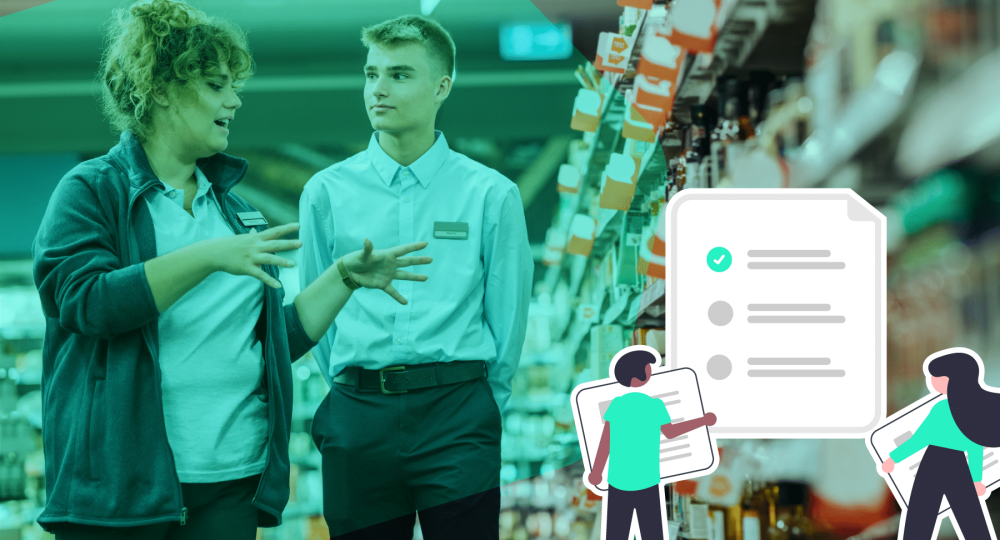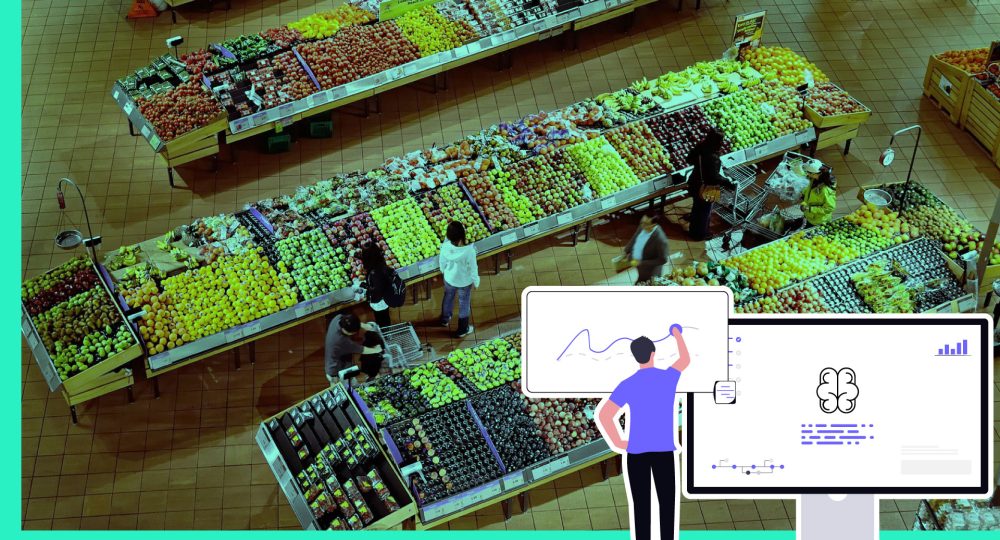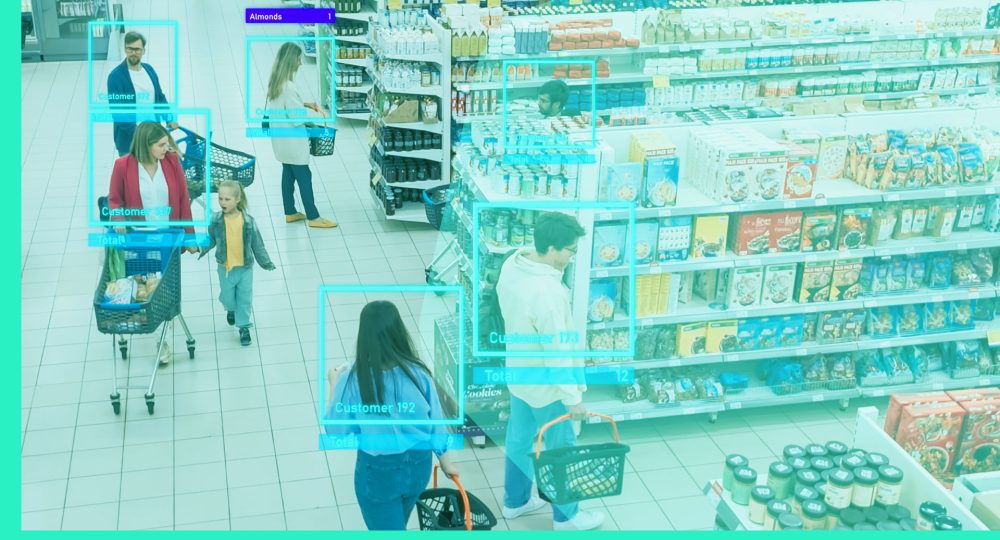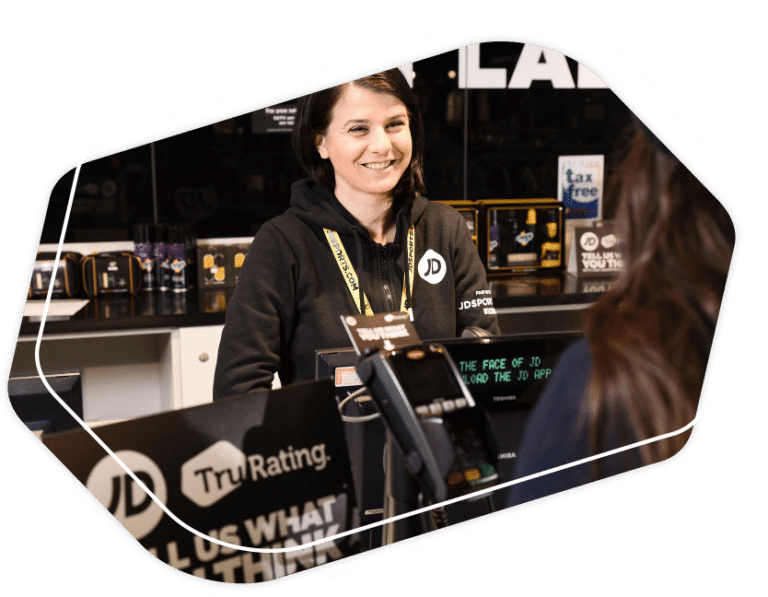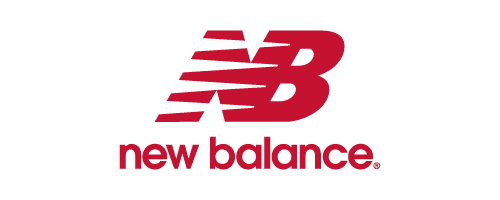In Part 1 of this series, we introduced the concept of the Retail Performance Layer, a real-time system designed to close the costly gap between strategy and execution. In Part 2, we pulled back the curtain on what happens without a Retail Performance Layer: failed pilots, inconsistent behaviors, invisible friction, and lost revenue hiding in plain sight.
If you’ve been following along, you’ve seen the hard truth play out: most retail execution breakdowns aren’t a people problem. They’re a system design problem. Now in Part 3, we’re going deeper, from symptoms to solutions. Because the real question facing retail leaders isn’t “Is our strategy good?” It’s “Do we have the infrastructure to deliver it at scale?.
This article is your blueprint for change. We’ll show how the Retail Performance Layer rewires outdated retail architecture, from top-down mandates and lagging KPIs to a closed-loop performance system that makes behavior visible, coaching immediate, and strategy actually executable. Let’s dive in.
The real retail bottleneck? Your operating system.
Most retailers have inherited an operating model that was never designed for speed, adaptability, or behavioral feedback. It was built in a slower era:
- Annual planning cycles.
- Top-down initiatives pushed from HQ.
- Performance tracked by lagging KPIs like sales comps and quarterly promoter score shifts.
Even today, many organizations still operate under the assumption that:
- Strategy is set by corporate
- Execution is managed in the field
- Feedback is something you “collect”
The result is a system that looks aligned on paper, but in practice, is fragmented, reactive, and blind to friction until it’s already cost you revenue. This is not an execution problem. It’s a system architecture problem. The structure of how retail operates has not kept pace with the speed at which customers, competitors, and expectations move. The Retail Performance Layer rewires this model. Let’s look at how.
From top-down push to closed-loop performance system
Old model:
- HQ sends down a new initiative (e.g. new checkout model)
- Field teams receive guidelines and limited training
- Success is defined by sales lift or anecdotal feedback
- If performance lags, blame and speculation begin
New model (with Retail Performance Layer):
- Strategy is deployed with execution signal embedded from Day 1
- Stores capture real-time feedback from customers on behavior, friction, and outcomes
- Field leaders coach with shift-level insights tied to KPIs
- Rollout success is validated and optimized in real time, not post-mortem
This is a true feedback-performance loop, not a broadcast system. It replaces guesswork with signal, retroactive fixes with proactive intervention, and anecdote with pattern. The Retail Performance Layer upgrades your business from initiative deployment to initiative performance.
From quarterly trends to daily execution precision
Ask any COO or VP of Retail Ops what their biggest challenge is, and you’ll hear a version of this:
“By the time I know something’s broken, the damage is already done.”
Why? Because in the absence of a live feedback loop, execution issues surface only when:
- Sales drop
- Promoter scores tank
- Customers churn
- Social reviews explode
But these are lagging indicators. You’re already weeks behind. With the Retail Performance Layer, you get:
- Execution signal by shift, store, and region
- Friction detection as it happens—not after
- Behavioral insight that ties to P&L impact
One enterprise retailer using TruRating identified a 24% ATV lift in stores that delivered one specific behavior: offering 3 options. Within 2 weeks, that behavior was coached fleet-wide driving measurable impact before sales data even caught up. That’s the new cadence: Measure hourly. Coach immediately. Improve constantly.
From survey-driven insights to behavior-driven performance
Traditional experience management systems ask:
- “How did the customer feel?”
- “Would they recommend us?”
- “What themes are emerging?”
That’s useful, but not enough. It tells you how people felt, but not what happened. The Retail Performance Layer asks a different set of questions:
- “Did the staff explain the benefits of the product?”
- “Did the customer receive a personal greeting?”
- “Was the store clean and well-signed?”
- “Did the experience deliver the new service model?”
And then it answers them at scale, in real-time, at the moment of truth. This moves the organization away from subjective sentiment and toward objective execution truth. Not to replace emotion, but to link it to action. If VoC is what the customer remembers, Retail Performance is what the customer experienced.
And it’s that experience that drives behavior – conversion, spend, and loyalty.
From functional siloes to cross-functional alignment
In most retail orgs, this is how experience breaks down:
- Strategy owns the initiative
- CX owns the feedback
- Ops owns the execution
- L&D owns the training
- Finance owns the ROI
And no one owns the loop. This leads to:
- Initiatives being declared “complete” when rollout is done, regardless of result
- Field teams being held accountable for outcomes they weren’t enabled to measure
- CX teams delivering reports no one acts on
- Finance teams questioning the ROI of initiatives they had no part in designing
The Retail Performance Layer rewires this. It gives:
- Strategy the ability to validate ideas in-flight
- CX real-time signal that influences execution
- Ops the visibility and tools to coach effectively
- L&D proof that behaviors are sticking (or not)
- Finance a revenue-linked case for scaling what works
This is how you stop fighting for the budget. You stop reporting correlation and start proving causation. The operating model becomes dynamic, not static At its core, the Retail Performance Layer upgrades your business from a reporting system to a performance system.
- Static dashboards become live feedback loops
- Quarterly reviews become weekly coaching rhythms
- Manual diagnostics become automated friction detection
- One-size-fits-all rollouts become tailored playbooks by region, format, and shift
And most importantly: Initiatives don’t just get deployed. They get executed. Monitored. Measured. Optimized. Re-scaled. That’s what it means to build an operating system that performs.
The shift is no longer optional
Every retailer wants growth. But without a Retail Performance Layer, growth becomes expensive, fragile, and full of waste. This isn’t about tech. It’s about systemic capability.
- Can you see where your strategy is breaking?
- Can your teams coach with precision, not instinct?
- Can you scale good ideas without scaling friction?
- Can you validate success in weeks, not quarters?
If not, your system isn’t broken. It’s just incomplete. The Retail Performance Layer completes it.
Next, I’ll lay out how to install the Retail Performance Layer step-by-step. From instrumentation and behavior mapping to store rollout and performance coaching, you’ll see exactly what it takes to move from reactive operator to performance-driven organization. Because in this market, speed isn’t optional. Execution isn’t theoretical. And visibility is everything. Let’s build the system that delivers it.
Building the system that performs – the path forward
The Retail Performance Layer is not an idea. It’s not a framework. It’s a system. And systems are meant to be built. This isn’t a pitch for another platform. It’s a call to replace the broken loop that’s been holding back your business – one where strategy gets deployed, feedback gets collected, but performance remains invisible until results stall.
- You don’t fix that with another dashboard.
- You fix it by engineering visibility into your operations at the point of truth.
- You fix it by turning behaviors into metrics, and metrics into outcomes.
- You fix it by building a Retail Performance Layer.
And here’s what that build looks like, from someone who’s done it:
Step 1: Instrument the front line
Start where friction happens at the point of transaction, in the store, with the associate. Every store, every shift, every behavior that supports your strategy must be made visible and measurable. This means:
- Embedding micro-feedback into the transaction flow (e.g. “Did we offer 3 options?” “Was the store clean?” “Did the associate greet you?”)
- Linking those inputs directly to behavioral outputs like ATV, conversion, and repeat rate
- Establishing signal fidelity across all locations, not just your top performers
Without instrumentation, your frontline is a black box. With it, it becomes a performance mirror.
Step 2: Map the friction, not just the sentiment
Traditional feedback programs chase “themes” and “trends.”
That’s not enough.
You need to:
- Diagnose where friction is occurring: region, store, shift, daypart
- Understand why it’s happening: behavior gaps, associate execution, layout confusion, training inconsistencies
- Identify what it’s costing you in revenue, loyalty, and brand trust
This isn’t qualitative research; it’s operational forensics. You’re not just asking how the customer feels. You’re asking what’s breaking, where, and what to do about it.
Step 3: Tie behavior to business outcomes
This is where most systems fall apart. They stop at “customer said this.” But you need to go one layer deeper:
- Did the trained behavior happen?
- If it did, what happened to the basket size, conversion rate, or repeat visit window?
- If it didn’t, what did it cost you?
This is where the Retail Performance Layer becomes your P&L defense system. It doesn’t just track CX. It protects ROI. And it gives your operators, field leaders, and finance teams a shared view of performance grounded in causation, not correlation.
Step 4: Enable coaching at the speed of business
Regional leaders don’t need more dashboards. They need to know:
- Where to go
- Who to coach
- What behavior to target
- And how it ties to the metric they’re accountable for
The Retail Performance Layer becomes their GPS:
- Directing focus to the stores where behavior breakdowns are dragging results
- Equipping them with real-time, store-level data to intervene before damage spreads
- Helping them replicate top-performing behaviors across similar store types, formats, or shifts
This turns your field organization into a performance acceleration engine. Not a compliance loop. Not a monitoring layer. A system of enablement.
Step 5: Integrate into your strategy rhythm
Once the layer is live, it becomes a strategic asset, not just an operational one. You’ll start using it to:
- Validate pilots in days, not quarters
- Run A/B tests on service models and see behavior compliance in real time
- Partner with marketing to understand how in-store experience is delivering (or breaking) brand promises
- Justify new staffing models, layout changes, or L&D investments with live performance evidence
You’re no longer reacting to lagging signals. You’re shaping strategy based on executed reality.
What happens when you build it
When the Retail Performance Layer is installed:
- Coaching moves from anecdote to precision.
- Rollouts go from risky to validated.
- CX shifts from soft power to strategic force.
- Field leaders become performance multipliers.
- And every associate interaction becomes a lever, not a liability.
This is not optimization. This is operational reinvention.
Final thought – you don’t need another tool. You need a system.
For 20 years, I’ve seen this pattern play out: The business launches a great idea. The field does their best. The feedback lags. The results stall. And no one knows why. I built the Retail Performance Layer because I lived that pain. And I refused to accept that the only way to know if something worked was to wait for the next quarterly sales report.
If you’re still managing retail with static dashboards, quarterly rollouts, and post-purchase surveys, you are not set up to win. Not in this market. Not at this speed. The Retail Performance Layer is how you move from hoping execution happens to knowing it is. From explaining what went wrong to showing what worked. From playing defense with data to running a business that performs. It’s time to stop collecting feedback. And start building the system that performs. Let’s go.


